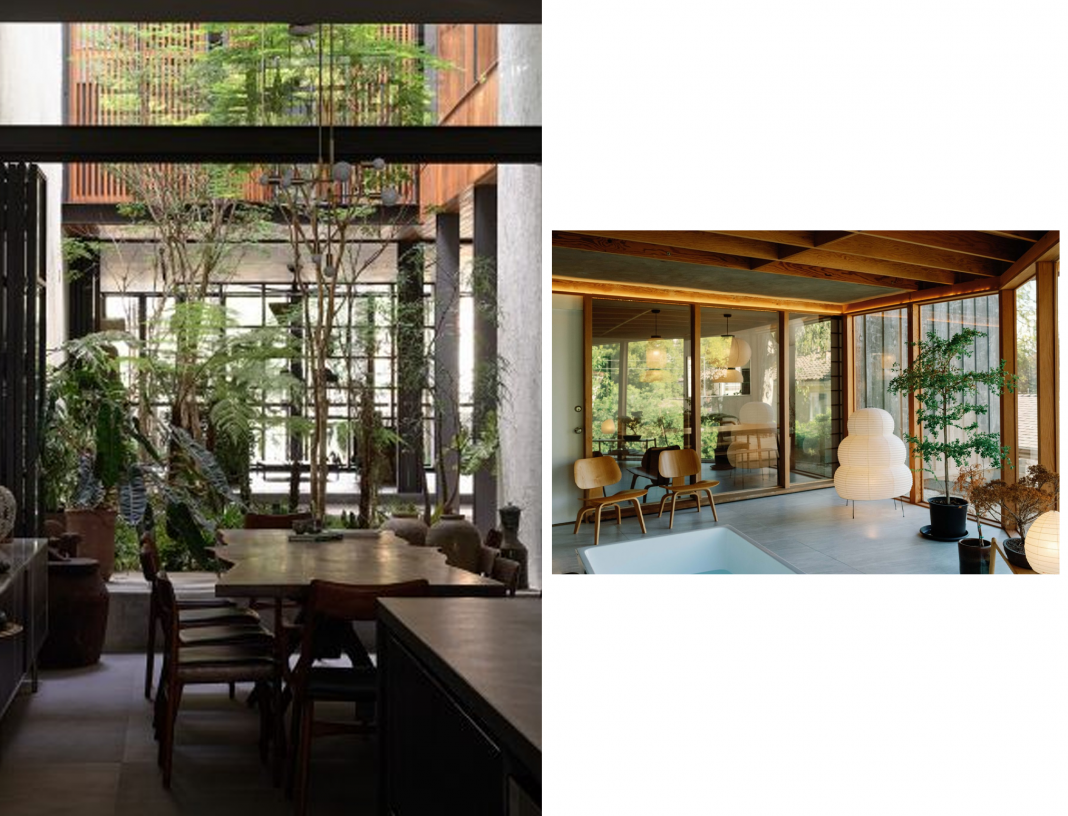Isamu Noguchi’s Akari lamps have transcended time and trend to become iconic objects of soft sculpture and ambient light. First created in 1951 and still handcrafted today in Japan’s Gifu region using traditional washi paper techniques, these luminaires are both functional and poetic. In this curated look at eight diverse interiors from around the world, the Akari lamps not only illuminate spaces but also shape their mood, character, and artistry.
Tradition meets timelessness
Despite being over seven decades old, Noguchi’s Akari light sculptures continue to feature in contemporary design, proving their relevance across cultures, climates, and styles. Derived from the Japanese word for “light,” akari also implies softness and illumination—qualities reflected in every delicate fold and organic shape of these lamps.
Crafted from handmade paper and a bamboo frame, Akari lamps bring a gentle glow to their environments. Their modular design, ranging from petite table lamps to dramatic floor pieces, makes them adaptable to any room—from compact hallways to expansive lofts. They not only act as light sources but also as sculptural centerpieces that invite a sense of calm and refinement.
A warm welcome in London
In Muswell Hill, a sustainable home designed by Architecture for London uses minimalist interiors and passive heating strategies to reduce energy consumption. Against this understated backdrop, the vibrant orange Akari 1AY lamp in the hallway injects a burst of color and charm. Though small, it stands out as a warm and playful greeter at the entrance, marrying form and function effortlessly.
The lamp’s juxtaposition with lime-plastered walls and natural finishes exemplifies the Akari’s versatility—it can be bold without being brash, artistic without overwhelming. In such a restrained, efficiency-driven home, the lamp introduces emotion into the rational.

Mid-century serenity in Los Angeles
In Duane House, a 1926 Los Angeles residence reimagined by OWIU, Noguchi’s designs find resonance within a mid-century and Japanese-inspired aesthetic. The home’s spa-like bathroom is crowned by two Akari lamps: a small table model and the floating 25N floor lamp, shaped like a luminous cloud.
Together, these lamps enhance the sense of tranquility and open space, framing the bathtub as a contemplative sanctuary. The natural light from the floor-to-ceiling windows blends with the soft diffusion of Akari’s paper, creating a moment of stillness and elegance that is both designed and organic.
Graphic contrast in São Paulo
In Brazil, the São Paulo apartment by BC Arquitetos uses material contrast to full effect—concrete columns meet polished walnut wood and in between, an asymmetrical Akari light decorated with black dots adds a graphic punctuation mark.
This large sculptural lamp acts almost as a mobile, hovering in a room where weight and texture are crucial design elements. Its playful presence lightens the architectural gravity, reminding us that modern design can still hold moments of delight.
Basement beauty in East London
London’s Powerscroft Road townhouse by Daytrip introduces the Akari lamp in yet another unique way—perched whimsically atop a wood-fired stove in a newly excavated basement kitchen. This unexpected placement blends functionality and whimsy, suggesting the lamp is both a source of light and a guardian of the hearth.
Here, stone flooring and marble surfaces emphasize clean lines, while the Akari lamp softens the geometry with its asymmetrical form and delicate glow. It’s a reminder that even utilitarian spaces deserve objects of grace and imagination.
Eclectic modernity in Kyiv
Interior designer Yana Molodykh used natural woods and cream tones to craft an eclectic attic apartment in Kyiv. Amid books, storage and art pieces, the Akari 9A lamp rises like a grounded spacecraft, bridging earthy textures with interstellar whimsy.
Its futuristic shape and soft luminance complement a palette of warmth and variety, showing how Akari lamps can act as sculptural anchors in even the most vibrant of interiors. They bring focus without dominating—a rare quality in decorative lighting.

Quiet contemplation in Singapore
Singapore’s Oku House by Freight Architects is rooted in the Japanese spatial principle of oku, or inwardness. This manifests as a calm, considered flow through spaces—complemented by a sparse material palette and strategic use of lighting.
Akari lamps punctuate these interiors with purpose. One stands quietly on a stair landing; another graces the light-filled kitchen. Their placement is deliberate, their presence restrained. In this context, the Akari becomes less of a design feature and more of a spatial breath—a pause between movement and stillness.

Alpine elegance in Austria
In House Bäumle, a timber-clad home designed by Bernardo Bader Architekten, pale woods and soft lighting define an airy Alpine interior. Positioned beside a wood-burning stove, the Akari 9A lamp adds a subtle counterpoint to the architectural minimalism.
While the home is clearly influenced by Nordic restraint, the Japanese light sculpture introduces a global sensibility—a nod to craft traditions that transcend geography. The lamp, with its glowing paper skin, mimics the warmth of the fire it stands beside.
Lighting as emotion
Across continents and design languages, one thing remains constant: Noguchi’s Akari lamps bring more than light. They offer atmosphere, narrative, and quiet drama. Their handmade quality evokes tradition, while their sculptural forms invite endless reinterpretation.
As homes grow more digitized and design trends shift rapidly, the enduring appeal of Akari lies in its humility. It is not flashy, nor is it nostalgic—it is simply essential. Whether casting shadows on terrazzo floors or perched beside a marble bath, the Akari lamp tells a story of craft, culture, and timeless beauty.



